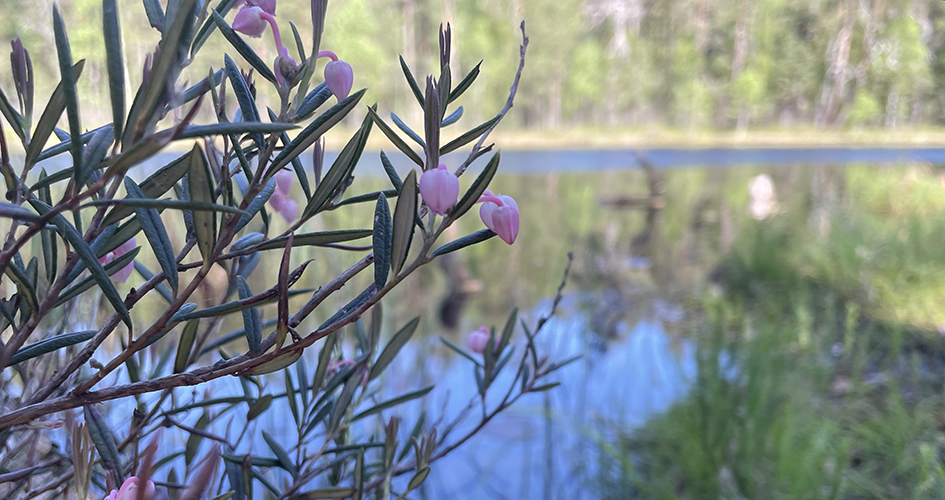 Foto: Anna Lindberg
Foto: Anna LindbergPlant life
Flora in the area is abundant, with a number of species beyond what is usually found in coniferous forests.
One of the most noteworthy is the wood fescue; its only habitat in Småland is here in the park. The field layer is dominated by mosses and lichens. In much of the area they form extensive carpets, even on rocky ground. In the old spruce forest, there is also a plentiful supply of hanging lichens, which often drape the trees and contribute to the sense of wilderness. Shelf fungus abounds. The most common is red banded polypore, but the most exclusive is Fomitopsis rosea, which is very unusual in southern Sweden. Here in Norra Kvill it seems to do extremely well, often appearing in large quantities on thick, fallen spruce.
Other plants you can come across on your hikes are two-leaved maianthemum, wood-sorrel, common cow-wheat, hairy wood-rush, bilberry, bearberry, lingonberry, marsh Labrador tea, spring pea, hepatica, bog arum, serrated wintergreen, green-flowered wintergreen and yellow bird's-nest.
Can forest fires save the forest?
The forest has been shaped by countless fires through the centuries. On really old pine trees there are traces of close to eighty fires. In the past fire was the forest’s normal way of rejuvenation. When the fire had moved on, new life could sprout forth. Today more than 100 years have passed since the forest burned. If it doesn’t burn again, the stands of pines will eventually diminish to the benefit of spruce. Conservationists are confronted with the alternatives of either burning the valuable old forest, risking both spruce and pines, or allowing nature to take its course and see the pine forest slowly disappear.
Share with your friends
Share this page with your friends on Facebook, X (formerly Twitter), Google+ and e-mail.





